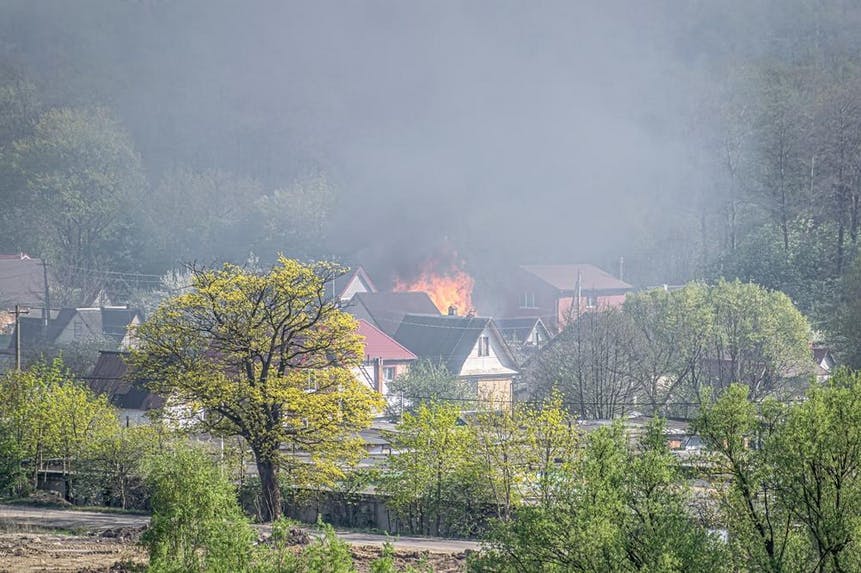How do most homes ignite during a wildfire?
A floating ember or piece of burning wood touches down on a roof, gutter, in a vent, under a deck, or on a porch and ignites leaves and debris, says the National Fire Protection Association. Or else, a surface fire simply takes the fast lane to your home via dry vegetation.
With that in mind, fortify your home like the castle it is with these 13 wildfire-repelling steps. But keep in mind that no product or technique is a fail-safe against a raging fire.
#1 Check Smoke and Carbon Monoxide Detectors
If you don’t already have working smoke detectors or haven’t tested them recently, make that your No. 1 job. Now.
#2 Check Fire Extinguishers
And if you don’t have them, buy a few.
#3 Have the Tools Ready to Fight
Have an easily accessible bucket, shovel (to dig a trench to protect against encroaching ground fire), and connected garden hose to help you defend the area around your home.
#4 Invest in Rain Barrels
An extra source of water can’t hurt. And rain barrels save on your water bills, too.
#5 Clear Yard of Debris
Keep gutters, porches, and the lawn free of debris, leaves and fallen branches. If a fire threat is imminent, remove furniture and decorations from decks and porches, including welcome mats.
#6 Plant Fire-Resistant Shrubs and Annuals
Irises, rhododendrons, hostas and lilacs have high-moisture content and could help stave off a fire. Your local Cooperative Extension Office can advise you on appropriate species for your area.
#7 Remove Tree Branches Lower Than 6 Feet
Fires tend to start low and rise. For that reason, don’t plant shrubs directly under trees; they can combust and cause the fire to climb the tree. Spacing out plants and shrubs is a good practice, too.
#8 Remove Tree Limbs Near Chimneys
Keep the limbs at least 10 feet away. Embers from burning limbs could fall in.
#9 Set Up a Protective Perimeter
Create a 100-foot perimeter around your home, free of dry leaves, grass and shrubs that fuel wildfires. Keep petroleum tanks, cars and woodpiles outside of this safe zone.
#10 Use Rocks Instead of Mulch Next to the House
Lay a six-inch swath of decorative rocks closest to the home and then use mulch from there. This also helps repel insects, like termites, and facilitates rainwater drainage.
#11 Use Non-Flammable Fencing
If you have wood fencing around your home, replace any three-foot sections that attach to the home with metal or other non-flammable fencing material. A metal gate or decorative fencing piece is stylish as well as fire-unfriendly.
#12 Cover Chimneys and Vents With Flame-Retardant Mesh
It’s cheap to do. Mesh costs just a few dollars from hardware or home improvement stores.
#13 Check Your Siding
Fire-resistant or non-combustible siding like stucco or brick provides the best protection against fire. Make sure your siding, whatever type, is in good repair because if the plywood or insulation is exposed, the home is more vulnerable to flames.
Some experts recommend spraying homes with fire retardants, which can range from a few hundred to a few thousand dollars, depending on the product, region and size of the project. But some of the chemicals used to make flame-retardants have toxic properties. Although you might have less exposure to chemicals used on your home’s exterior than those inside, toxicity issues could still be a factor.
Most importantly, if a wildfire is on its way, leave the premises. Have an evacuation plan worked out with your family before the worst happens.
Reprinted from HouseLogic.com with permission of the NATIONAL ASSOCIATION OF REALTORS®.
Learn more about wildfire risk in your area at First Street Foundation.




